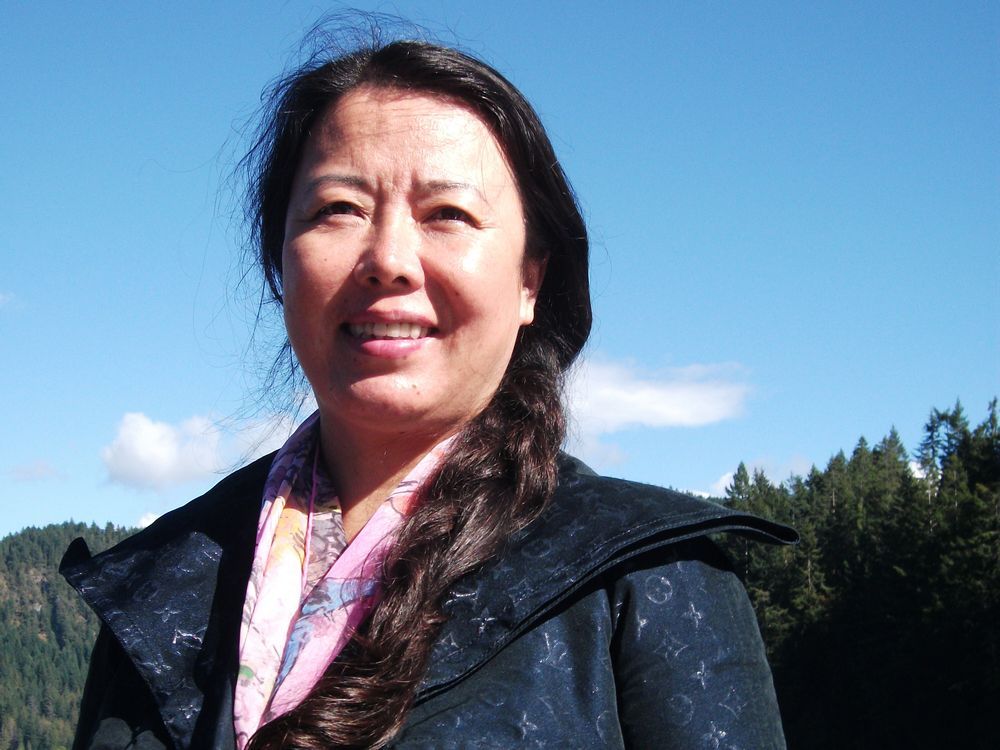Chinese firm to open massive land-based shellfish hatchery on Sunshine Coast
Hummingbird Cove is licensed to produce 23 species of seafood, including urchins, geoduck, sea cucumbers, scallops, oysters, clams and mussels, according to the Department of Fisheries and Oceans (DFO).

The firm intends to harvest wild scallops to use as brood stock to produce scallop spat (larvae) for their own use and for sale to other local aquaculture operations.
“There is a huge hole in the local spat market,” said Dyble. “Why are (local) growers bringing in spat from New Zealand?”

Owners Xi Ping Ding and Zhiyi Chen plan to add a second facility to grow and export mature shellfish by September, 2020. Once the second phase of investment is completed, Hummingbird Cove will be among the largest shellfish hatchery and farming operations in North America, when operating at full capacity, according to the company website.

Ha Ha [nice words]
Ding and Chen have opened an office under the name Pacific Aquaculture International in Powell River to manage the company’s international interests, but the firm has been flagged as “not in good standing” after failing to file a mandatory annual report according to B.C. Registry Services.
Fresh sea water drawn in to the facility and returned to the ocean is not degraded or altered, the owners say.
The facility’s DFO permits allow installation of two new intake pipes and allows the hatchery effluent to be discharged into Jervis Inlet, subject to review and approval of the utility tenure by the provincial Ministry of Forests, Lands and Natural Resource Operations.
“DFO recommended mitigation measures during construction of the intake pipes, including an on-site qualified environmental monitor to supervise the intake pipe site preparation and installation, to assess for any species of concern, and to apply mitigation measures to ensure the protection of fish,” the department said in an email. “The proponent has agreed to these measures.”
Pacific Aquaculture has no plans to raise finfish on the site and has consulted with affected First Nations from the project’s inception.
“We were initially worried about waste going into the ocean, but that will be filtered,” said Clint Williams, elected chief of the Tla’amin First Nation. “We have concerns about net-pen (salmon) farms, but this is a dry-land facility and we are eager to see that it is as green as they say it is.”
Members of the Tla’amin community worked on the construction of the hatchery over the past two summers and Williams is optimistic that the second phase of the project will result in permanent jobs for his people.
Hummingbird has faced a number of legal hitches during the construction process, one of which is yet to be resolved.
According to documents filed with the Supreme Court of British Columbia, a $3-million lawsuit filed against Ding and Chen by Richmond businessman Morris Chen for unpaid loans was resolved November 30. A $118,289 builder’s lien filed by Dick’s Lumber for building materials was resolved July 26.
However, another suit was filed earlier this year by contractor Creative Property Developments, the firm brought in to assembled prefabricated buildings on the site. Work stopped after a conflict arose about the suitability of the foundations, according to documents filed with the Supreme Court of British Columbia. Creative is seeking $157,000 for work completed, extra work requested by the defendants and loss of profits.
Hummingbird filed a counter claim against Creative in the amount of $464,000 for failing to complete the work as agreed.
Work resumed on the site after a third party engineer verified the suitability of the foundations, according to Dyble.
“I’ve never worked on a large construction project that doesn’t have setbacks,” he said. “When you look at the magnitude of what we are trying to do compared with what already existed before in Canada, that’s normal.”

No comments:
Post a Comment
Comments always welcome!